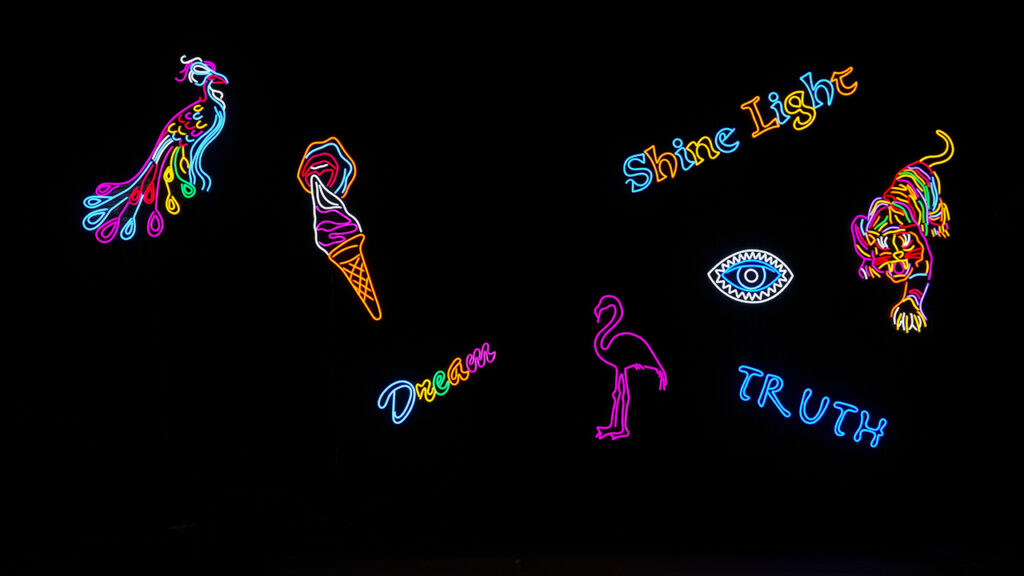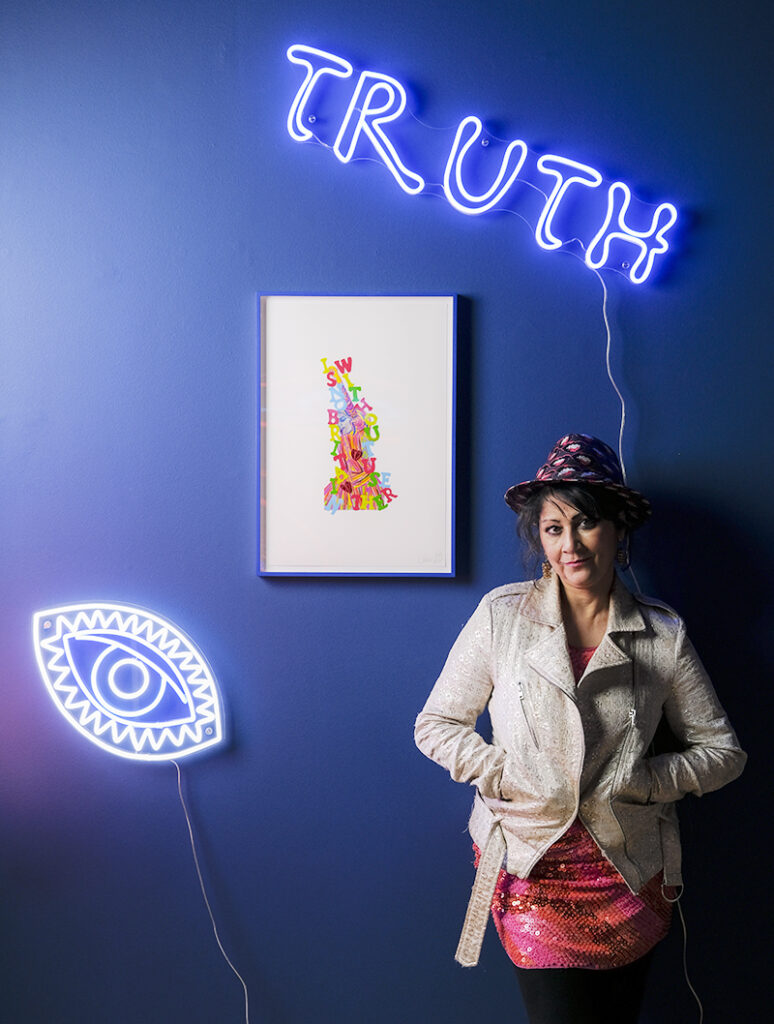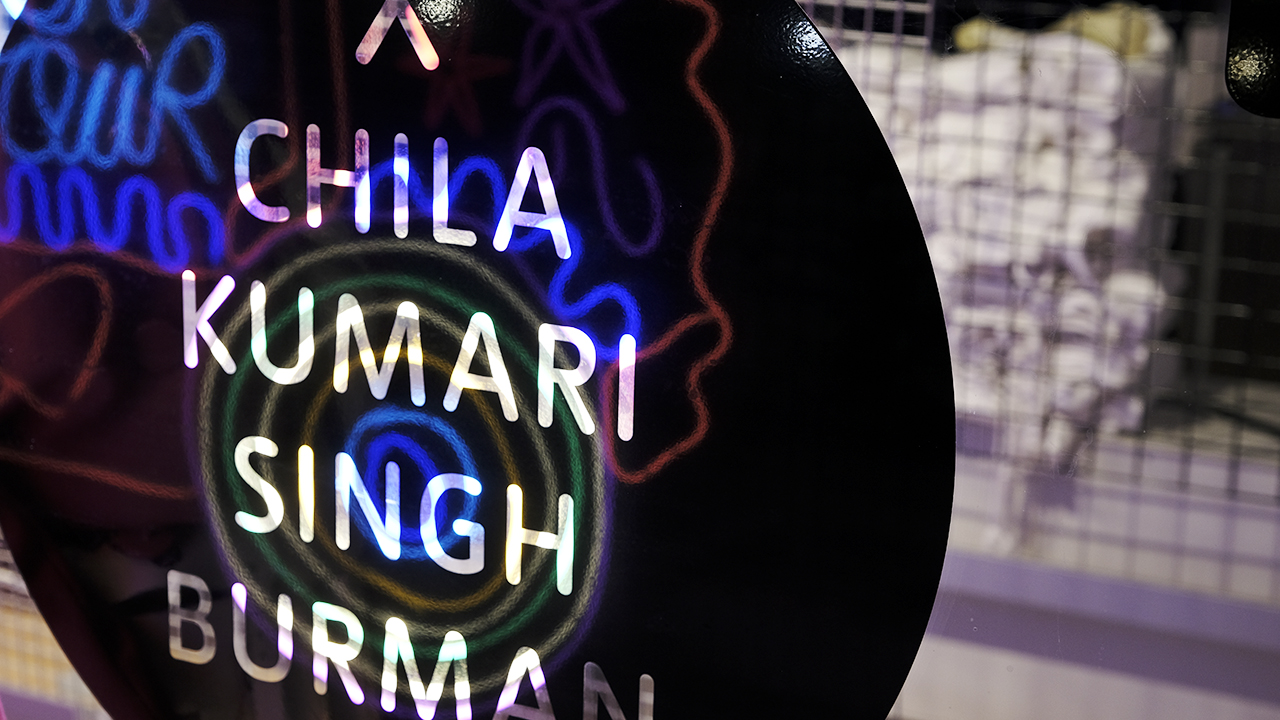The 2020 Winter Commission at Tate Britain by artist Chila Kumari Singh Burman was a massive hit. Using a heap of neon, Burman lit up the building’s façade during London’s long five-month COVID lockdown, drawing huge crowds eager to experience an outdoor installation. Fast forward 12 months and the Tate is hoping Burman can pull in the crowds again, except this time, it wants them to pull out their wallets too.
Last month, Tate Modern unveiled Tate Edit x Chila Kumari Singh Burman, an “immersive shopping experience” at the iconic gallery. A full-on takeover by the artist of the only retail space at the Tate that’s accessible to non-ticket holders, it’s been launched to coincide with the prime Christmas shopping period.
“There is genuinely, something to see, something to eat, something to smell, something to hear, something to do and crucially, something to buy,” Liam Darbon, Head of Omnichannel Trading at Tate, tells Jing Culture & Commerce. “We spoke at length about how to take Chila’s 3D neon artworks and place them in a 4D retail experience — creating an immersive, sensory journey.”

The Tate Edit x Chila Kumari Singh Burman retail experience comes dotted with the artist’s signature neon sculptures. Image: Will George / Tate Britain
Burman’s reimagining of the Tate Edit shop is certainly a feast for the senses. Two of the most memorable neon sculptures from her 2020 Winter Commission (the Tiger and Ice Cream Van) are back on display, and shoppers can browse a wide-range of Burman-designed products (or those featuring her work) such as clothing and stationary, as well as a handpicked selection of her favorite books. Her personally curated music playlist is pumped out from behind the tills and the space is filled with scents she selected. There’s even the chance to taste Burman’s Ice Cream, made especially for Tate.
“The product and retail concept was developed hand-in-hand with Chila and the Tate teams — everything from the Mango and Cardamon Kulfi to the diffuser scents and her playlist,” says Darbon.

The store retails goods bearing Burman’s work, as well as various products handpicked by the artist. Image: Will George / Tate Britain
This marks the first time the Tate has embarked on a full-on artist takeover of its shop, and though the idea was only conceived a few months ago, it represents the next step in the evolution of the Tate Edit shop. The store plays a major role in the Tate’s retail estate, having been established to showcase carefully chosen artist products, limited editions, design objects and homeware. Already backed by a history of experimentation in order to commercially support the Tate’s mission to increase the enjoyment and understanding of art, the project demonstrates an innovative rethinking of a flexible and accessible space.
With museums taking a battering due to the pandemic closures and visitors still slow to return, might such an outing help claw back cash after months of silent tills? Yes, says Darbon. “As we begin to exit the pandemic, we are questioning everything. We’re trying to find new and innovative ways to build back better.” Crucially, this is an innovation that didn’t cost very much. “The biggest costs were [purchasing the] product and the shop-fit, but overall the investment was very small in comparison to pre-pandemic,” Darbon reveals.

Burman with her silkscreen print, “Without Us There Is No Britain.” Image: Will George / Tate Britain
The fact that the Tate team hit upon a concept that could maximize a sense of newness without requiring burdensome initial investment is perhaps the most ingenious aspect of this project. By bringing in a big-name artist with crowd-pleasing work, it’s been able to generate very cost-effective PR, an important tool in boosting sales. And it’s paying off: “The return-on-investment looks really encouraging after a couple of weeks,” Darbon says.
In fact, overall sales in the shop are already up over 50 percent in the first fortnight. Nine of the artist’s new limited edition silkscreen prints, titled “Without Us There Is No Britain,” have sold since opening — and at £750 a print, that’s a big chunk of revenue. In the opening week alone, fashion sales were also up 144 percent across the Tate estate, driven by Burman’s pieces.
So will this kind of takeover become a regular thing, perhaps an annual tradition lead up to Christmas? “Yes, definitely,” says Darbon. “We haven’t even thought about who might be next, but watch this space!”
Maxwell Blowfield has been working in press and communications in the museum sector for eight years. He’s also the creator of the popular maxwell museums newsletter, which was named as one the 20 best cultural newsletters by Elephant magazine. Find him on Instagram and Twitter @maxwellmuseums.



